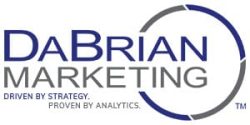This time of the year we’re either busy analyzing the past year’s data for the new year or dreaming of great food, presents, and time with the family over the holiday. In keeping with both of those notions, I’ve decided to take a stab at song-writing with this fun cheesy little version of the “12 Days of Christmas” carol/blog hybrid!
Enjoy (or point and laugh profusely. Either way, you’ll have fun)!
On the 12th Month of Service the Client Wants to Track:
12 PDF downloads
In the case of Google Analytics, tagging downloads on your website with Event Tracking can reduce inflated bounce rates and give you greater insights into how supplemental information and deliverables impact the decision process of prospective customers and ultimately your bottom line.
11 Affiliate link clicks
The same methodologies that are used with tracking downloads can also be applied to links to affiliate websites. Tagging these affiliate links with Outbound Link tagging can help reduce those artificially-inflated bounce rates.
10 billboard adverts
Traditional marketing initiatives need not be segregated from your web analytics data any longer! Through a combination of vanity URLs and unique landing pages, you can easily track the effectiveness of initiatives like billboards and radio ads and uncover the insights to improve these campaigns.
9 PPC campaigns
There’s far more to a pay-per-click campaign than just clicks. Though Google AdWords provides cost data and click analysis, you can get the complete picture by tying Google AdWords and Google Analytics together. You can see how well the landing page content and call-outs are resonating with your paid search visitors, identify disconnects between a display ad and your site, and use these insights to hone in your PPC strategy.
8 Tweets-a-tweetin'
Don’t just throw Twitter and social posts out there and hope something sticks! Tag those links pointing to your site using Google’s URL builder so you can use Google Analytics to determine the effectiveness of those Tweets!
7 QR codes
QR codes have enabled marketers to easily point recipients to their web assets via a hyperlink in barcode form. As an added layer of measurement, you can add tracking parameters to the destination URL of these QR codes. Another great way to bridge the insight gap between traditional and digital!
6 Customer segments
I’ve said it before and I’ll say it again: If you’re not segmenting your web analytics data, you’re probably not doing it right. Customer behavior from your campaigns to your website can vary greatly depending on what segment they fit into. Slicing and dicing your data accordingly will help optimize your customer’s experience and improve marketing to those individuals.
5 KPIs!
You can’t measure without a unit of measurement to go by! That’s just a fact of life. When it comes to measuring your marketing, establishing solid KPIs that align with your business goals and objectives is crucial. You want to ensure that these KPIs are meaningful to the decision makers and speak to the success of your campaigns.
4 Vanity numbers
Similar to how vanity URLs and QR codes can be used with traditional marketing, there’s also opportunities to use vanity phone numbers that are integrated with call tracking platforms. This provides another great layer of measurement and yet another opportunity to bridge that digital and traditional gap!
3 Email blasts
Most email marketing platforms allow for varying levels of integration with Web Analytics tools. Platforms like MyEmma offer automatic tagging for links pointing to your web assets. This extends your analytical visibility beyond just open rates and allows you to see whether or not the subject lines, messages, and call-outs are really resonating with your audiences.
2 Subdomains
Perhaps your organization’s site stretches across several subdomains (or even across multiple domains entirely). This is often the case with websites that incorporate a blog, online application system, or 3rd party shopping cart. Seamless deployment of web analytics tracking through the use of cross-domain methods will shine light into problem areas of conversion funnels and other valuable tidbits.
And a CVAR in a tracking cookie!
Google Analytics allows for the use of CVARs, or Custom Variables, which allow you to set specific variables within the tracking cookie. These CVARs can be set when a user performs a specific action on your site, comes from a certain traffic source, or fits other specific criteria.
